Once upon a time there was a rocket
This rocket was a very important step by the USSR in gaining its civilization freedom. The thing is that in the global confrontation with the United States (and they wanted to crush, they wanted, even their plans were published - where, when and how much they wanted to bomb) the USSR had a very unpleasant Achilles heel.
The United States could attack the USSR from a dozen or so directions and from bases very close to the territory of the USSR, while the Soviet Union had practically nothing near the United States except for Cuba.
The importance of this situation is vividly demonstrated by the Caribbean crisis itself, to which Р-36 quite a bit did not have time - after all, it cost the US to suspect that the USSR in Cuba has ballistic missiles with a nuclear stuffing - that's all: the Air Force, the Navy and the US Marines were alarmed with the aim of blockade of such a brazen violation by the USSR of the established geopolitical "nonequilibrium equilibrium".
Here's how it looked then, back in the year 1962 already:
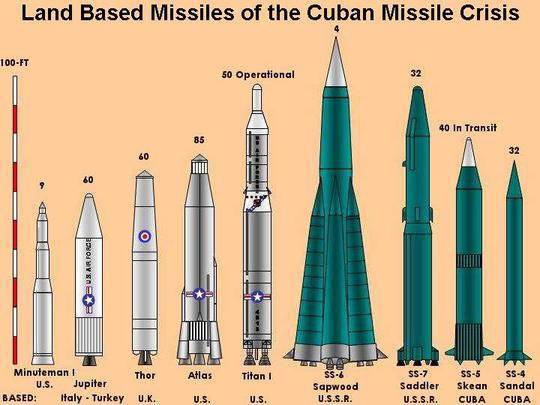
In Cuba, only 32 P-12 missiles were installed (the “8K63 product”, according to the American classification - SS-4 Sandal). Here it is, in the figure, the extreme right.
It was one of the first mass-produced Soviet rockets on high-boiling rocket fuel components. Previously, the P-12 / 8K63 was adopted with high-boiling components only the P-11 / 8К11 rocket, which is depicted in this photo:
The P-11 (8K11) somehow turned out to be a unique rocket. I just need to tell you her American name: SS-1 Scud.
Yes, that same Scud (in Russian “Squall”), with which Iraq fired at Israel and which laid the foundation of all its missiles with the terrible unpronounceable names of North Korea.
Yes, this modest 8K11 is very unlike its distant North Korean descendant, which can even bring something very small to near-earth orbit - but the essence of the situation is this: based on SS-1 Scud A, which still had The 1K8 index, called P-14 and was part of the 17K9 Elbrus complex, was exported under the name R-72, and in simple terms, behind the eyes was called Kerosene.
The 8K11 rocket was a lot new compared to previous developments, which all design bureaus in the USSR in one way or another made on the basis of the German V-2 captured missile.
It should be noted that the development of the first Scud was also not without the German grandfather, but this grandfather, unlike the V-2, was much less well known. But it is his ideas that will lead us later to the great-granddaughter of 8K11 - our already mentioned P-36.
German grandfather 8K11 was called "Wasserfal". In Russian it will be “Waterfall”, but the grandfather, as I have already said, was a German and the first guided anti-aircraft missile in the world. Here he is:
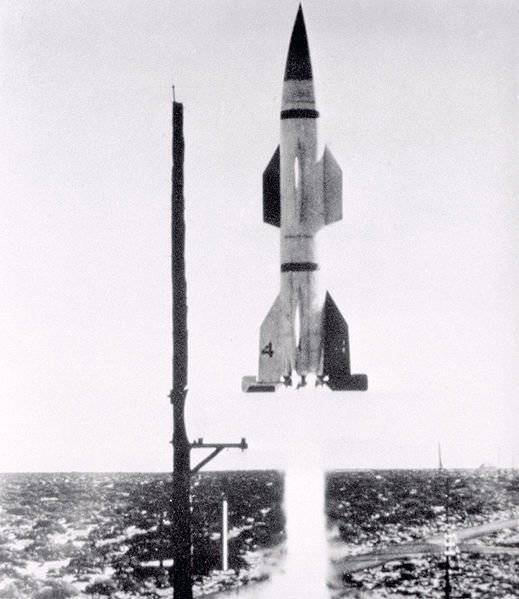
The Germans began to make “waterfalls” back in the 1941 year, and by the year 1943 it had already passed all the necessary tests.
Since these anti-aircraft missiles must be kept in a filled state for a long time, and liquid oxygen is unsuitable for this, the engine of the Wasserfal rocket worked on the fuel mixture, the components of which were called salbey and visol. “Salbay” was a common nitrogen brush, but the “visol” was a special hydrocarbon fuel with a vinyl base.
The rocket, if desired, by the efforts of pedantic German technocrats and bureaucrats, could have been safely deployed by the spring of 1944, but stories it was free to go a completely different way.
Albert Speer, Minister of Industry of the Third Reich, will later write in his memoirs:
Since we subsequently fired nine hundred large offensive missiles every month, we could easily produce several thousand of these smaller and more expensive missiles each month. I still think that with the help of these missiles in combination with jet fighters we, since the spring of 1944, would successfully defend our industry from enemy bombardments, but Hitler, obsessed with a thirst for revenge, decided to use new missiles to attack England. "
And so it happened - the idea of "revolutionaries" Werner von Braun and Hitler to throw England at rockets ended up with a massive scale of money and loss of funds, and the idea of a technocrat and bureaucrat Speer remained only his idea, but did not help Germany to postpone the defeat in the war.
Compared to liquid oxygen, which was used on the V-2, high-boiling components were much more convenient: firstly, they were liquid at room temperature (which was the reason for their very long storage in an “ampulled” rocket), and secondly - they self-ignite when mixed.
To launch a rocket, it was enough to blow up two squibs, tearing the membranes of the ampoules with the fuel and with the oxidizer, and the compressed nitrogen began to force the oxidizer and the fuel into the combustion chamber, where the main action began.
Now, on modern rockets, with their hellish reserves of oxidizer and fuel, of course, no one relies solely on compressed nitrogen to push components to the desired combustion chamber. Typically, for these purposes, use a special unit on the engine itself - a turbopump that is powered by the same fuel and fuel to ensure its work.
By virtue of this piping modern rocket engine looks like something like this:
Around the scheme of the turbopump and twist the main ideas of modern engine builders.
The main schemes of the rocket engine are only two: open and closed. With an open cycle, the turbopump ejects the spent generator gas outside the combustion chamber, and with the closed cycle this partially burned (otherwise, the turbopump simply burns from high temperature), the so-called “sweet” gas goes further into the main combustion chamber.
It would seem - a small loss: throw "overboard" a little fuel to the turbopump. However, since the rocket often counts every kilogram of weight, it is this thin trickle of fuel and oxidizer lost through the turbo pump that creates an impressive advantage of the engine of a closed circuit.
To the credit of the USSR, it must be said that he very well learned how to make engines of a closed cycle. But in the United States they didn’t go so far into mass series - according to a closed scheme, the Americans only made the main engine of the Space Shuttle (SSME) powered by liquid oxygen and hydrogen:

As a result, today the United States, trying to somehow revive the production of hydrogen engines of the second and third stages of the famous Saturn-5 rocket and while finally writing off the hydrogen SSME, is buying Russian closed-cycle kerosene engines - RD-180 and NK-33.
We will really need engines later, in the continuation of the story about the missiles (and the Maidan), but for now let us return to the missiles. And to the Caribbean crisis.
In the “unequal equality” of the Caribbean crisis, we have two very different SS-6 Sapwood and SS-4 Sandal missiles from the USSR. In Russian, these missiles are called P-7 / 8K71 and P-12 / 8K63.
The first of them, I think, has already learned almost everything: this is the famous royal “Seven”, which carried into orbit both the first artificial satellite of the Earth, and the first man in space.
The rocket was a wonderful “horse” for space exploration, but a completely useless fighter: liquid oxygen as an oxidizer made it necessary to build an enormous starting position for the rocket and constantly recharge the rocket with additional oxidizer.
As a result, at the time of the Caribbean crisis, the USSR had 4 (in words: four) the launch positions for the launch of the Р-7 - at the space centers (read: rocket launch positions) at Baikonur and in Plesetsk.
And, as you understand, the Plesetsk cosmodrome was only in peacetime for “launching satellites into polar orbits.” His main task was always to launch the royal "sevens" through a temechko of the Earth, along the meridian across the North Pole - and directly to the cities of the American foe.
The main shock force of the USSR in the Caribbean crisis was P-12. Here it is, the world's first medium-range ballistic missile on high-boiling fuel components:
It has to be said that not a few rockets were made as quickly and with such a high tempo as the P-12. The rocket was made at once in four enterprises of the USSR Ministry of General Engineering. So in Soviet times, if someone did not know, the bureaucrats called the technocrats, who produced everything nuclear-missile and a little space.
P-12, developed under the leadership of Mikhail Yangel, was designed in Yuzhnoye Design Bureau, in Dnepropetrovsk, then OKB-586.
Well, they produced a rocket plant number 586 (today “Southern Machine-Building Plant”, Dnepropetrovsk), Plant No. 172 (“Motovilikha Plants”, Perm), Plant No. 166 (Polet, Omsk) and Plant No. 47 (Strela, Orenburg ). In total, more than 2300 P-12 missiles were produced. For nine years, from 1958 to 1967 year.
In the year 250-255 working days. For the year the USSR made the 255 P-12 missiles. By rocket per day. And let no one leave offended and without a gift.
And who will try to say here: “Well, the people had nothing to eat, but the damned communists did all the rockets,” I will answer. Work on the project to use the P-12 as a space launch vehicle for launching small satellites of the Earth began in 1957 before the launch of its flight tests. By the fall of 1961, these works reached the stage of field tests. As a result, two-stage light space carriers of the Cosmos series were created with the 63С1 and 11К63 indexes, in which Р-12 was the first stage.
So — all the USSR’s P-12 missiles were used one way or another. Having put into orbit a lot of things different and useful.
At the same time, despite the impressive range (2800 kilometers), and mobile basing (trolleys were not made for the parade on Red Square: this staff carriages of these missiles), the P-12 could still be used exclusively against the European allies of the United States.
Against America itself, up to the 1962 of the year, the USSR could have put up only four P-7 missiles.
New York, Chicago, Washington, Philadelphia. You can - Boston. But then - without Philadelphia.
About Los Angeles or Dallas can not think.
Do not get it ...
Therefore, in the wake of success with the P-12, the OKB-586 is assigned the following task: to create an intercontinental ballistic missile on high-boiling components. At the same time, you can evaluate how smoothly and quickly the bureaucratic machine of the technocrats of the USSR worked.
P-12 adopted by the State Commission 4 March 1959.
The assignment for the development of ICBM P-16 (8K64) issued by the Central Committee of the CPSU and the Government of 13 on May 1959. The developer is still the Yuzhnoye design bureau.
And then there is a disaster. Terrible, monstrous. October 24 Day 1960 of the year will be a truly “black day” for Soviet rocket engineers.
For 15 minutes before the launch, the engines of the second stage of the P-16 rocket, tested at the cosmodrome (rocket base?), Suddenly turn on.
A year and a half has passed since the decree, a lot of things in the rocket are still flawed and damp. Rocket fuel is unique, but it ignites simply from contact with an oxidizer.
In seconds, the launch complex turns into a pitch of fiery hell.
In the fire, 74 of a person immediately burned alive, among them the commander of the Strategic Missile Forces Marshal Mitrofan Nedelin, a large group of leading specialists from the OKB-586. Subsequently, 4 died in hospitals due to burns and poisoning. The launch site No. 41 was completely destroyed.
Mikhail Yangel survived miraculously - before the P-16 explosion, he moved away from the launch pad to the allotted place for a smoke break. The head of the landfill, Colonel Konstantin Gerchik, struggled to crawl out, receiving severe poisoning and burns, especially of the hands, had to wear gloves even in summer, in terrible heat, reaching 50 degrees in the shade in July at Baikonur.
At the Tyura-Tam proving ground (as Baikonur was then called), they immediately responded to this terrible catastrophe by introducing almost draconian safety measures when testing rocket and space technology. These measures later saved many lives, although the catastrophes continued to collect tribute to human lives over and over again.
But people then clearly knew why they needed this counter-revolution. Because by the 1962 crisis of the year, X-NUMX P-32 (16-8) missiles were already aimed at the USA. According to the American classification - SS-64 Saddler ("Horse").
It was these missiles that finally solved the long-standing problem: “how to get the American one” and at least slightly improved the “unequal equality” of the 1962 model of the year, which only a year ago would have to be supported only with the help of Р-7 and Р-12, which were many worse than their American competitors.
With a range of 13 000 kilometers, the P-16 rocket confidently covered almost the entire territory of the United States, and having squeezed the calculations of the P-12 missiles from Cuba, America, in general, did not solve any of the security tasks.
It was a trivial exchange of Soviet missiles in Cuba for similar US missile positions in Turkey.
In the web, there are few offensive pictures of this breakthrough rocket. Still, whatever one may say, this was the first intercontinental ballistic missile in the world with high-boiling components. At the time of the Caribbean crisis, the United States had either missiles on kerosene-oxygen (like the Royal Seven) and the first solid-fuel ICBM - Minuteman-1.
Here is what the rocket launch complex looked like:
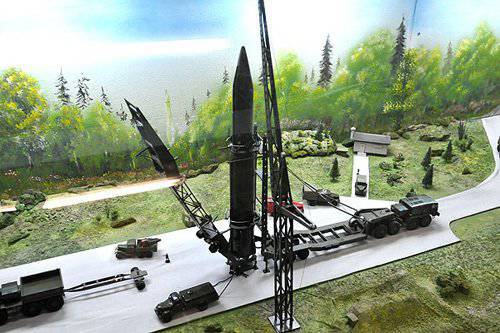
And here is how she looked in life:
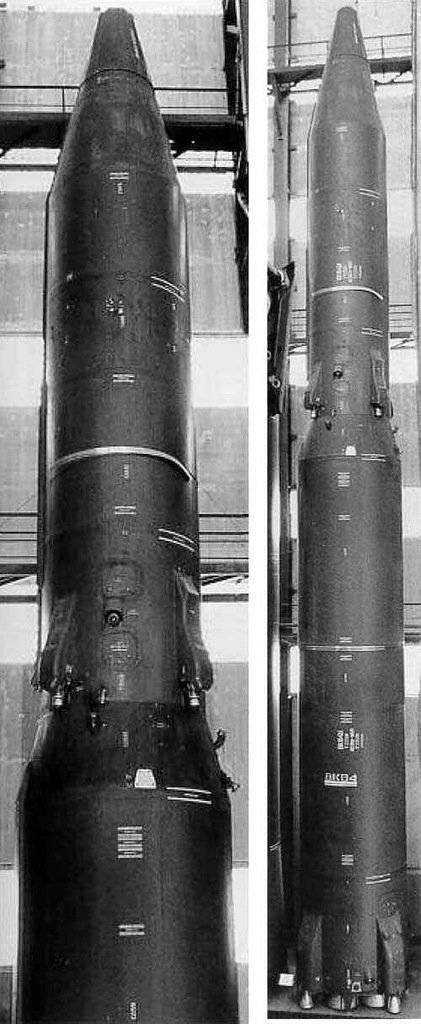
The next step in the development of rocket technology on high-alcohol components was the creation of “long-term storage rockets”. The thing is that high-boiling components are a very aggressive environment, as a result of which neither P-12 nor P-16 could be kept in the filled state for more than one month. Because of this, it took dozens of minutes or even hours to bring the missiles to a state of full readiness for launch, depending on the initial conditions.
Therefore, at the end of 586-s, OKB-50 proposed to upgrade both of its missiles, denoting them respectively: Р-22 and Р-26. The first figure symbolized the second step in the development of the OKB-586 strategic missiles, the second one indicated continuity with the previous missile of a similar firing range. The main quality they had was an ampulated execution of fuel tanks and the possibility of being in a filled state for up to one year. The task, which was set for the German great-grandfather “Wasserfal”, was decided for his much more powerful descendants.
Here is the ampulized, upgraded P-26 (8K66) parade on Red Square:
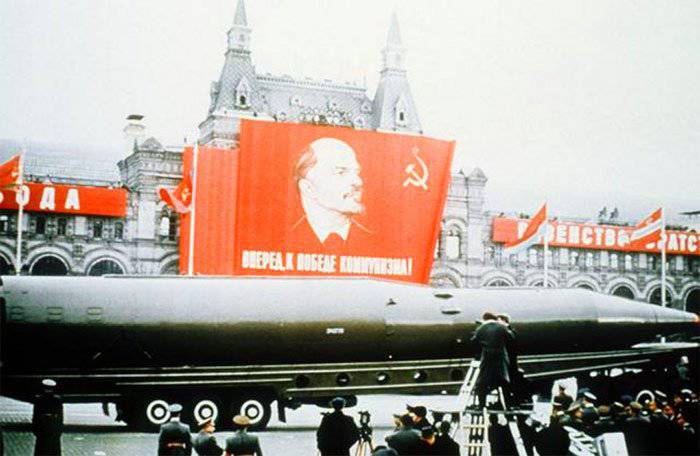
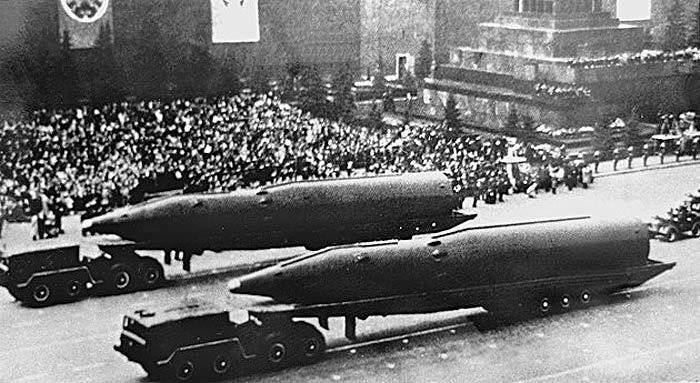
However, OKB-586 did not stop there. And it created what the Americans did not have in principle: Global rocket.
The one, P-36, with which we began our conversation.
This rocket received a special name - P-36orb (from the word "orbital") or 8K69 and could bring a small thermonuclear warhead into low-Earth orbit.
As you remember, the first Soviet missiles could not boast at the beginning of their journey with absolutely nothing unique. They started from vulnerable positions, they had to be long and tedious to fill with capricious fuel, they were damn little.
Yes, and they flew to the United States at the limit of their range: 13 000 kilometers, in the absence of Cuba, as a springboard, butt enough to get the big cities of the continental US.
Therefore, we had to fly along the shortest path. Through the same North Pole. From the maximum as far north as Plesetsk. Which is good only to launch satellites (rockets?) Into polar orbits.
Because of this, the US early warning system was designed to detect the launches of Soviet missiles from the north, from the east, and from the west.
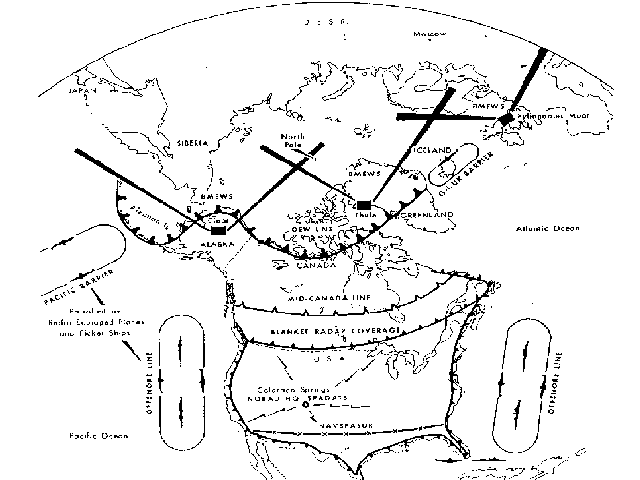
And then the damned Russians make a rocket (the very 8K69, P-36orb), which quietly goes towards India, flies over Antarctica, rises into the Northern Hemisphere along South America and hits the unprotected southern underbelly of the United States.
At the same time, the rocket received several advantages at once: an unlimited range of flight, allowing to hit targets unattainable for intercontinental ballistic missiles, the possibility of hitting the same target from opposite directions, which forces the enemy to create anti-missile defenses around and not only from the threatened side. At the same time, of course, the cost of such defense increases significantly.
In addition, in this case, it was possible to significantly reduce the flight time of the orbital head part compared to the flight time of the head part of the ICBM during the launch of the orbital rocket in the shortest direction.
But the choice of the corresponding orbit implied the impossibility of predicting the area of the drop in the combat charge while on the orbital phase of the flight. Maybe Boston. Maybe Philadelphia. And maybe San Francisco.
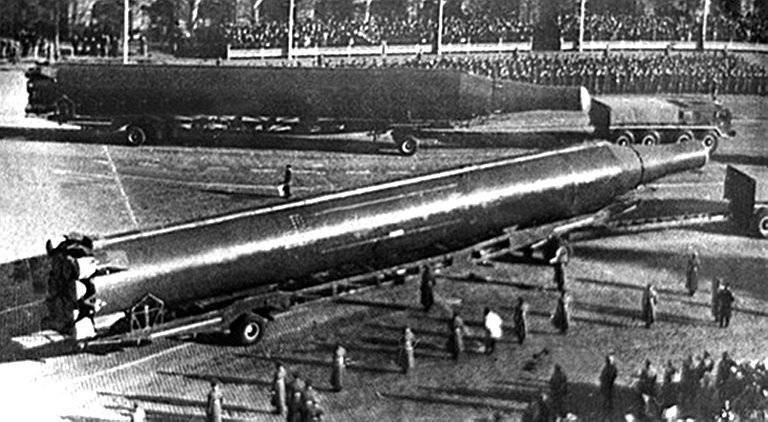
Such an unusual rocket was created in OKB-586.
At the same time, which is typical, the rocket did not violate the formal ban on the deployment of nuclear weapons in space, spelled out in the Space Treaty. Since she herself was not placed in space, but only stood on combat duty on the ground. And space? Well, yes, he is here, next to us.
You never know what a rocket can do. Not doing the same yet!
I must say that the Americans were worried about this rocket and very much so.
Therefore, the Americans introduced a special amendment to the SALT-2 Treaty, which obliged the USSR to remove these missiles from combat duty in the 1983 year.
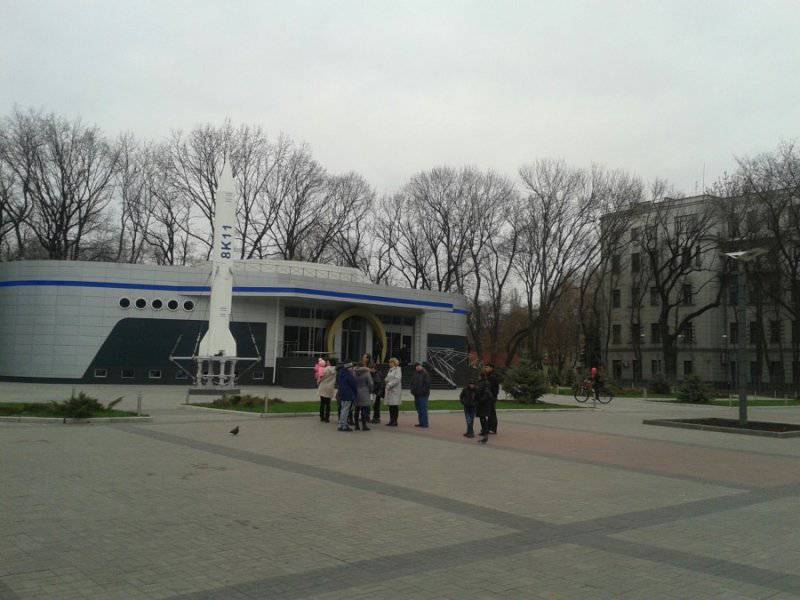
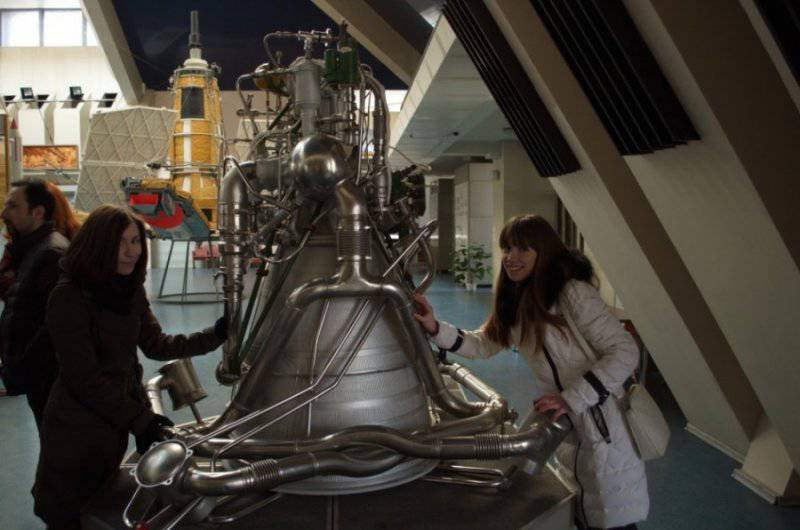
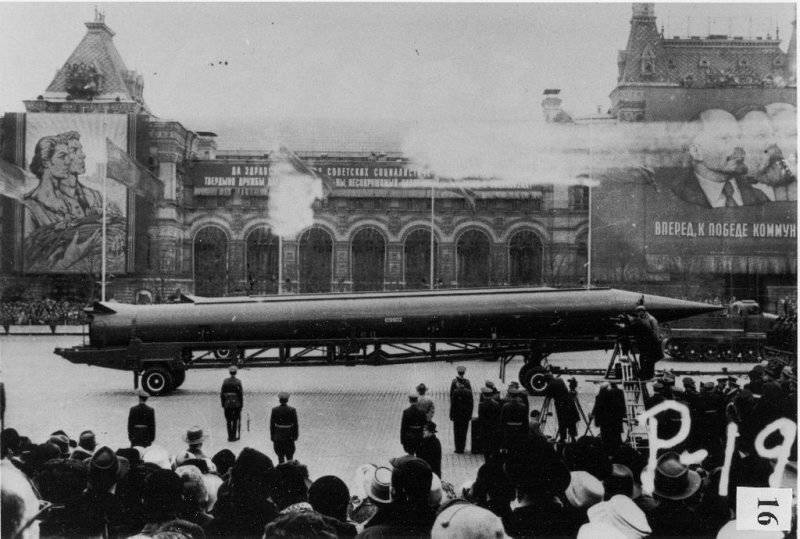
Information